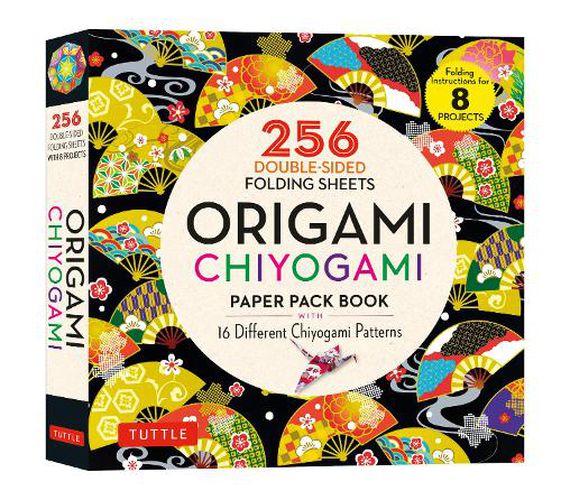Readings Newsletter
Become a Readings Member to make your shopping experience even easier.
Sign in or sign up for free!
You’re not far away from qualifying for FREE standard shipping within Australia
You’ve qualified for FREE standard shipping within Australia
The cart is loading…






New functional format, same high-quality paper! This origami paper pack from Tuttle Publishing has 256 sheets of richly saturated, double-sided origami paper. Held into place with an easy tear-out design, you won’t have to worry about loose papers in your pack falling out or getting creased and crinkled. Origami Chiyogami Paper Pack Book includes:
256 6-inch folding papers 16 unique patterns, with a coordinating colour on the reverse side 13 pages of full-colour instruction, with origami tips and tricks Step-by-step directions for folding 8 origami models
Chiyogami patterns are known for saturated colours and graphic patterns. They represent Japanese traditional style and are often inspired by Kimono fabric. Originally printed by woodblock, Japanese artists began to silkscreen Chiyogami designs by hand in the twentieth century, and continue to do so today.
$9.00 standard shipping within Australia
FREE standard shipping within Australia for orders over $100.00
Express & International shipping calculated at checkout
New functional format, same high-quality paper! This origami paper pack from Tuttle Publishing has 256 sheets of richly saturated, double-sided origami paper. Held into place with an easy tear-out design, you won’t have to worry about loose papers in your pack falling out or getting creased and crinkled. Origami Chiyogami Paper Pack Book includes:
256 6-inch folding papers 16 unique patterns, with a coordinating colour on the reverse side 13 pages of full-colour instruction, with origami tips and tricks Step-by-step directions for folding 8 origami models
Chiyogami patterns are known for saturated colours and graphic patterns. They represent Japanese traditional style and are often inspired by Kimono fabric. Originally printed by woodblock, Japanese artists began to silkscreen Chiyogami designs by hand in the twentieth century, and continue to do so today.